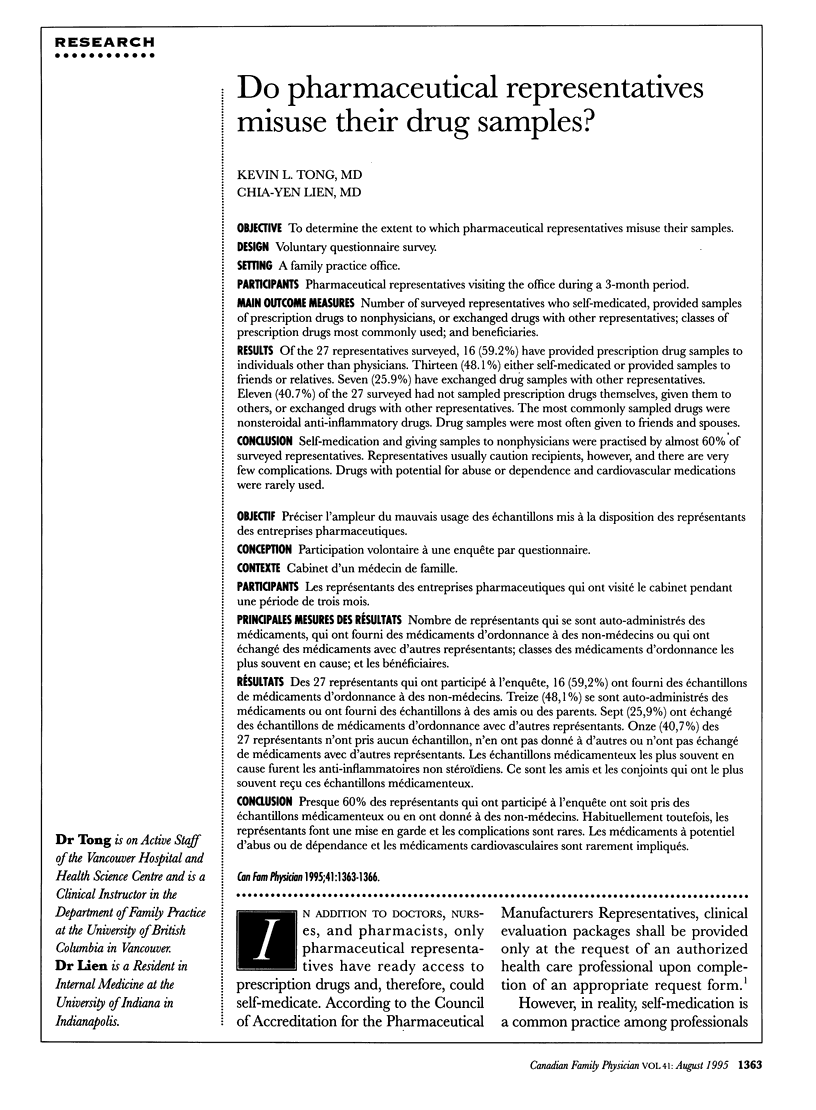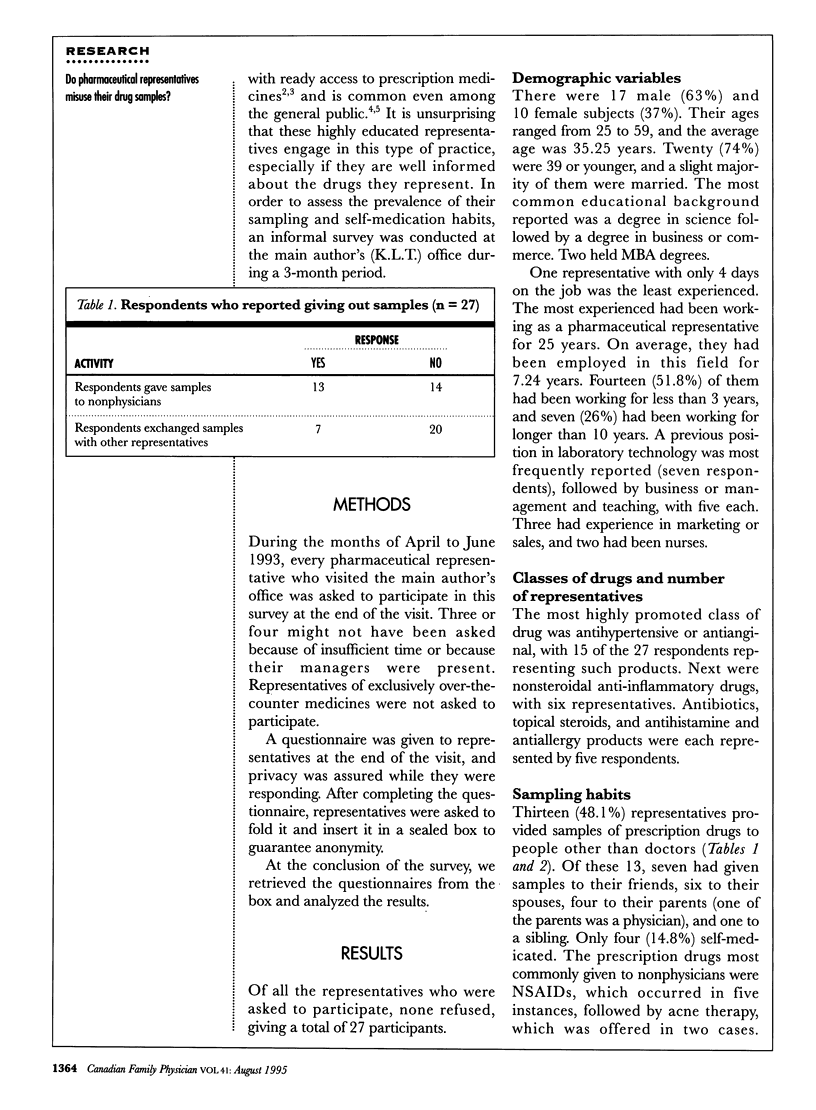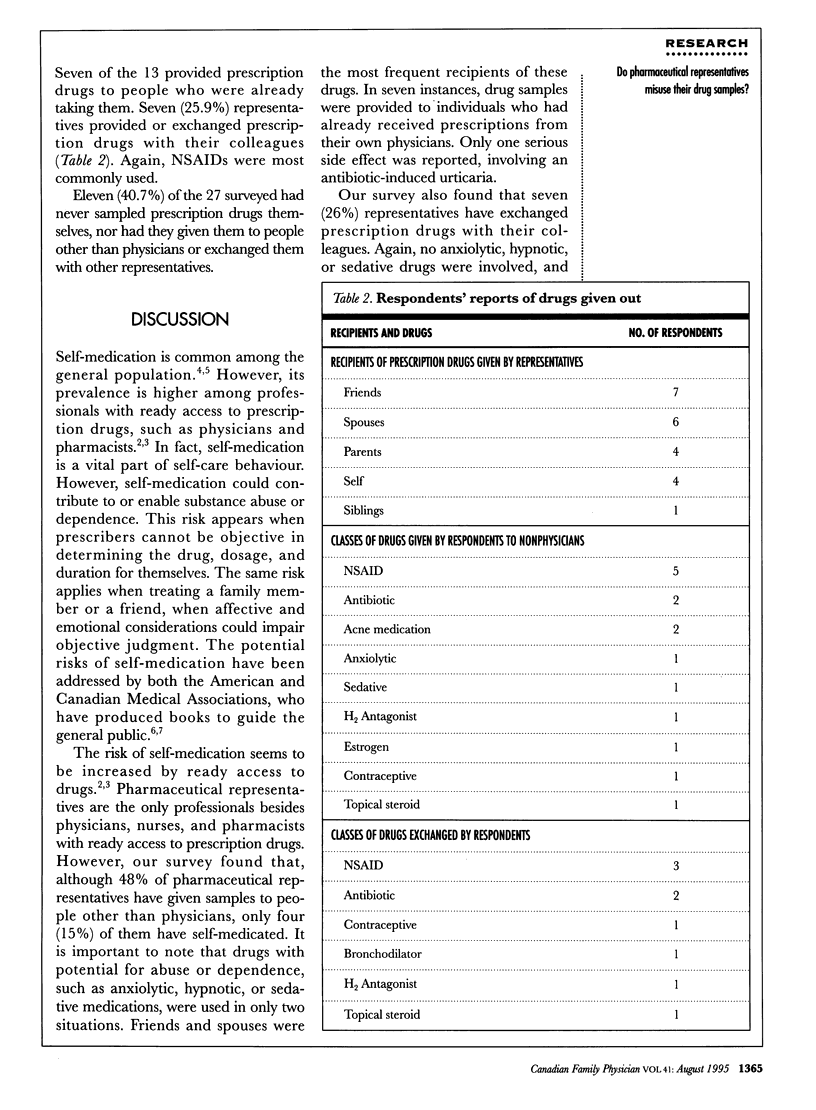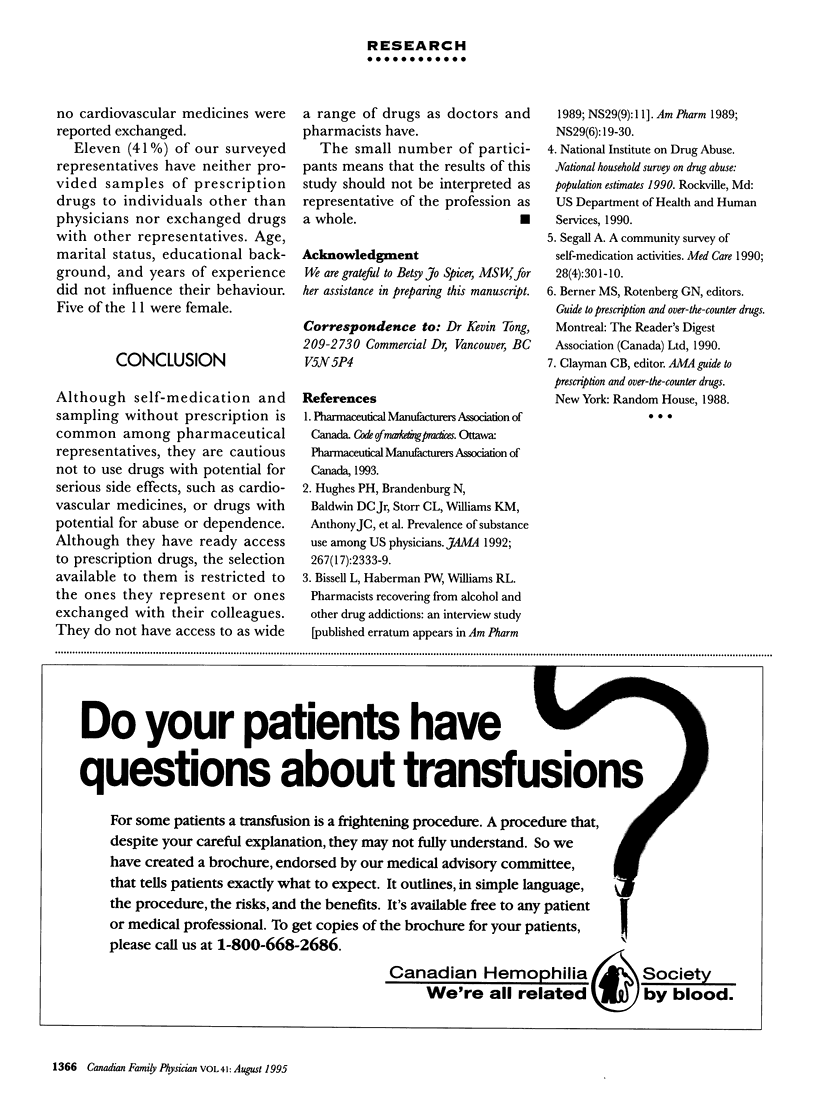Abstract
OBJECTIVE: To determine the extent to which pharmaceutical representatives misuse their samples. DESIGN: Voluntary questionnaire survey. SETTING: A family practice office. PARTICIPANTS: Pharmaceutical representatives visiting the office during a 3-month period. MAIN OUTCOME MEASURES: Number of surveyed representatives who self-medicated, provided samples of prescription drugs to nonphysicians, or exchanged drugs with other representatives; classes of prescription drugs most commonly used; and beneficiaries. RESULTS: Of the 27 representatives surveyed, 16 (59.2%) have provided prescription drug samples to individuals other than physicians. Thirteen (48.1%) either self-medicated or provided samples to friends or relatives. Seven (25.9%) have exchanged drug samples with other representatives. Eleven (40.7%) of the 27 surveyed had not sampled prescription drugs themselves, given them to others, or exchanged drugs with other representatives. The most commonly sampled drugs were nonsteroidal anti-inflammatory drugs. Drug samples were most often given to friends and spouses. CONCLUSION: Self-medication and giving samples to nonphysicians were practised by almost 60% of surveyed representatives. Representatives usually caution recipients, however, and there are very few complications. Drugs with potential for abuse or dependence and cardiovascular medications were rarely used.
Full text
PDF



Selected References
These references are in PubMed. This may not be the complete list of references from this article.
- Bissell L., Haberman P. W., Williams R. L. Pharmacists recovering from alcohol and other drug addictions: an interview study. Am Pharm. 1989 Jun;NS29(6):19–30. doi: 10.1016/s0160-3450(15)31759-1. [DOI] [PubMed] [Google Scholar]
- Hughes P. H., Brandenburg N., Baldwin D. C., Jr, Storr C. L., Williams K. M., Anthony J. C., Sheehan D. V. Prevalence of substance use among US physicians. JAMA. 1992 May 6;267(17):2333–2339. [PubMed] [Google Scholar]
- Segall A. A community survey of self-medication activities. Med Care. 1990 Apr;28(4):301–310. doi: 10.1097/00005650-199004000-00002. [DOI] [PubMed] [Google Scholar]


